Last Chance to Catch NYC's Holiday Notalgia Train
We met the voices of the NYC subway on our nostalgia ride this weekend!


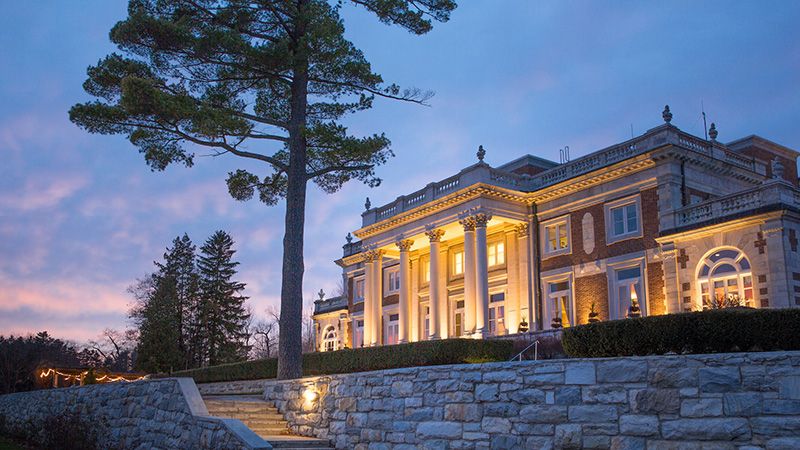 Image courtesy Canyon Ranch
Image courtesy Canyon Ranch
Located about three hours north of Manhattan, the Berkshires in Massachusetts was once a prime spot for the Gilded Age wealthy from New York and Boston to vacation – and continues to be a year-round destination. The period of rapid economic growth that followed the Civil War brought tremendous wealth. The opulence and luxury of this era found its way to the Berkshires in the way of sumptuous estates and summer mansions. While the heyday of the Berkshire estates are gone, many of these opulent edifices can still be experienced, givings visitors a glimpse into a bygone era in history.
There is also much more to discover in the Berkshires – arts, culture, outdoor sports (including skiing), but a must is to discover the wonderful Gilded Age mansions that can still be visited.
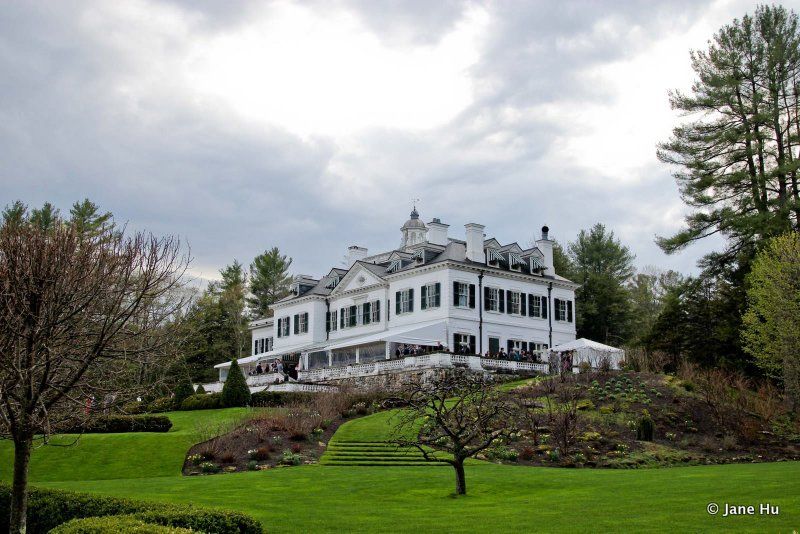
Photo by Jane Hu Photography
The Mount, located in Lenox Massachusetts, was the home of Pulitzer Prize-winning writer Edith Wharton (Age of Innocence) after she was married. She designed the home and gardens with architect Ogden Codman, Jr., and the two co-wrote the book The Decoration of Houses. Wharton was born to a Gilded Age elite New York City family but, in a very modern way, created her own career as a female writer, a story well-chronicled in the book The Brave Escape of Edith Wharton. Following the breakdown of her marriage and a divorce, she moved to Paris. There, she would live out the rest of her life, garnering a Chevalier Legion of Honor for her volunteer work and brave journeys to report from the front line of World War I.
After changing hands several times (at some point, it was used as a school as well), The Mount was rescued from significant deterioration and restored by the non-profit, Edith Wharton Restoration, Inc. You can visit the house in the summer months and even host your wedding here.

Image courtesy Canyon Ranch
Currently one of the two sites of the Canyon Ranch spa and health resort, Bellefontaine Mansion was the beloved home of the businessman and socialite Giraud Foster. Bellefointaine was originally built as the “summer cottage” for Foster and his wife, between the years of 1896 and 1898. Prominent architectural firm Carrere and Hastings did the design, which is said to have been inspired by that of Petit Trianon at Versailles.
Bellefontaine was the epitome of opulence during its heyday, with furnishings prefabricated in Paris and set in place by expert cabinet workers, and immaculate paintings and sculptures that reflected Giraud Foster’s knowledge in art, architecture and literature.
When Giraud Foster’s wife died in 1932 at their winter estate in South Carolina, Foster sold that estate and made Bellefontaine his permanent residence. Foster lived the rest of his long life at Bellefontaine, until he passed away in 1947 at the age of 95. Foster’s death marked the end of an era for socialites who had brought international fame to the Berkshires.
After Foster’s death the estate with all its furniture and land, which was valued for over $500,000 was sold for a mere $80,000. The mansion started to deteriorate and fell into a state of disrepair, until it captured the attention of the health resort, Canyon Ranch, which had been seeking a location in the East Coast. After restoration, the Bellefontaine Mansion opened on October 1, 1989 as a state-of-the-art spa. This year, Canyon Ranch began to sell residences, called “Canyon Ranch Living,” in a new-construction on the property.
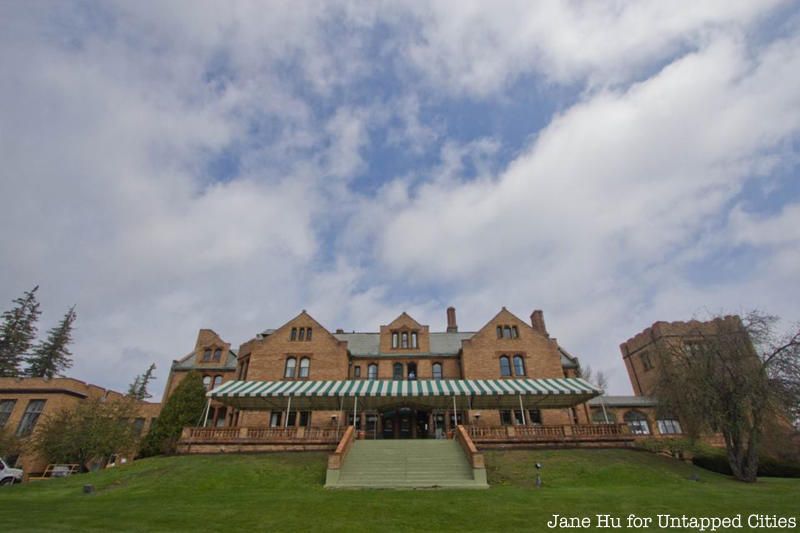
Photo by Jane Hu Photography
Cranwell is one of the most strikingly situated of the Berkshires Gilded Age mansions, located on a hill on Route 20, emerging like a castle to all those who drive by. The land was purchased in 1853 by Reverend Henry Ward Beecher, brother of famed writer Harriet Beecher Stowe, author of Uncle Tom’s Cabin. Beecher himself was a renown preacher at Plymouth Congregational Church in Brooklyn, known today for its role on the Underground Railroad and for having a piece of Plymouth Rock on display.
The views from the hilltop site, where Beecher built a farmhouse he called Blossom Farm, was precisely what admired, and wrote, “From here I can see the very hills of Heaven.” Henry Ward Beecher had hoped to run for U.S. President but was mired in a very Victorian-era scandal, having been named in a “correspondent” in a divorce case.
In 1869, he sold the property to General John F. Rathbone, who moved the farmhouse to build the Wyndhurst mansion. J.D. Sloane, brother of the owner of Elm Court (another mansion we’ll discuss), purchased the property and built an even more opulent mansion, which is the one that stands today.

Ventfort Hall was among the most expensive mansion Gilded Age Berkshire estates to be built with the cost of $900,000 when erected. The mansion was designed by the prominent architects Rotch & Tilden for George and Sarah Morgan, sister of J.P Morgan, in 1893. Described as one of the most beautiful places in Lenox, the Jacobean-style mansion contains 9 main bedrooms and 10 servant’s bedrooms, 7 bathrooms, and 17 fireplaces, which in total amount to 28,000 square feet of living space. Now on 11.7 acres, Ventfort Hall originally sat in the epicenter of a sprawling 26 acre garden.
After the Morgans’ deaths, the house was rented to Margaret Vanderbilt, whose husband, Alfred Gwynne Vanderbilt had died on the Lusitania, for a brief period. After 1945, the mansion traded many hands, during which time it served as a dormitory for Tanglewood music students, a summer hotel, the Michel Fokine Ballet Summer Camp, and community housing for the religious organization The Bible Speaks (now known as Greater Grace World Outreach).
From 1991 to 1997 the mansion sustained severe damage by a nursing home developer which planned to demolish the house. In 1997 the Ventfort Hall Association, a non-profit, local preservation group, was established to repair the mansion. With a five-year loan from the National Trust for Historic Preservation, the Ventfort Hall Association was able to purchase the house.
The mansion is now home to the Ventfort Hall Mansion and Gilded Age Museum and contains exhibits about the approximately 75 homes built in Lenox in the late 19th century, when the village was a popular location in the Gilded Age. It was a prominent film location in the Michael Caine film, The Cider House Rules.
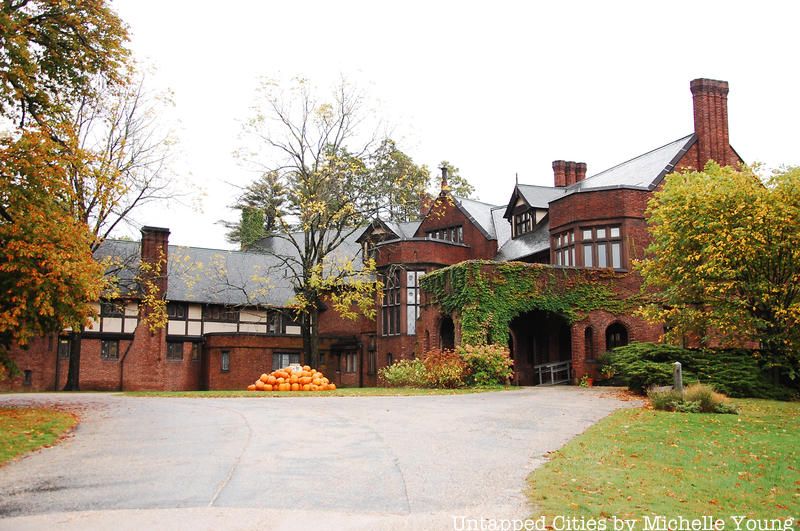
Now a luxurious resort, hotel, and spa that hosts a plethora of events and weddings, the Blantyre resort (which is located next to Cranwell) dates back to the late 1890s, when Robert Paterson was introduced to the Lenox area by J.D. Sloan (of W & J Sloane). The 220 acres that Paterson acquired originally was originally called “Highlawn,” home to the Dorr family. Paterson demolished the modest estate to construct his mansion, which was to be nothing short of a castle of “feudal architectural features,” comprising towers, turrets, and gargoyles. The mansion, which was designed by the architect Robert Henderson Robertson, was modeled after Paterson’s mother’s ancestral home in Blantyre, Scotland–hence the name of the mansion. Construction began in 1901, and the sumptuous mansion was furnished in the English style, with all the furniture coming from England.
Over the course of the next 15 to 20 years, Blantyre was used actively for garden parties and grand dinners, with musicians from New York City and lavish dishes–all befitting the Gilded Age. After the end of the Gilded Age with the introduction of the income tax, the golden age of the Blantyre mansion ended. Over the course of the next 60 years, the mansion changed many hands and deteriorated, until in 1980, Jack and Jane Fitzpatrick bought the estate for their daughter Ann Fitzpatrick Brown, who became the eighth owner.
Ann reopened Blantyre in 1981 as a elegant hotel and restaurant where visitors can peer in the past and experience snippets of life in a bygone era. As of 2005, Blantyre is operational year round.
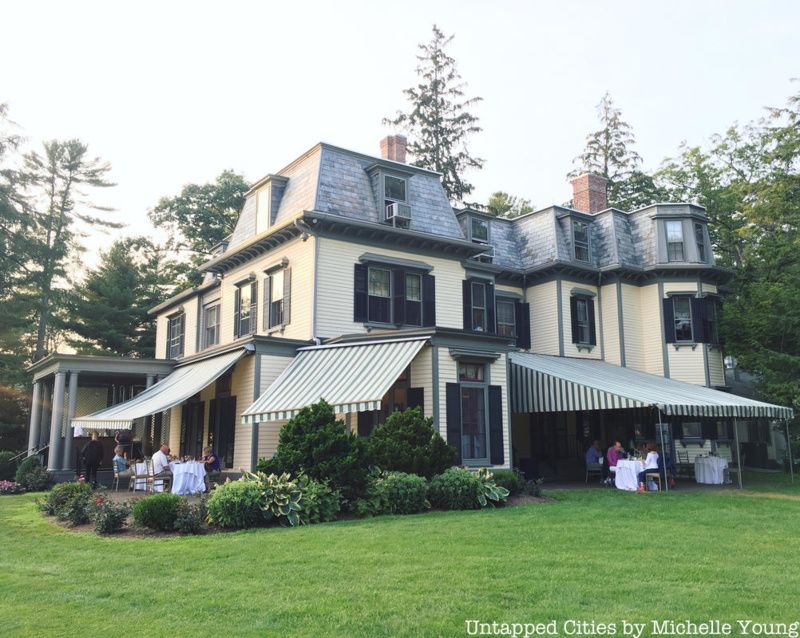
Perhaps the most recognizable of the Gilded Age mansions in modern days is the Tappan estate, which today is the summer home of the Boston Symphony Orchestra, and the site of the world renowned music center, Tanglewood.
In 1934 a group of Berkshire summer residence arranged for members of the New York Philharmonic to perform three outdoor concerts. The festival was a success, and was repeated the next year. The year after, in 1936, the festival board invited the Boston Symphony to perform in the Berkshires. In the winter of 1936, Mrs. Gorham Brooks and Miss Mary Aspinwall Tappan offered their family estate as the summer venue for the Boston Symphony. And so, on August 5, 1937 a record crowd of 5,000 convened under the tents of the Tappan estate lawns for the festival. During an intermission Gertrude Robinson Smith, one of the festival founders announced a fundraiser for the erection of a permanent home for the summer concert series. Within minutes more than $30,000 was raised.
After a few designs were deemed too expensive by the committee, an engineer by the name of Joseph Franz erected a structure–dubbed “the shed”–that, with some modifications, to this day has hosted the Boston Symphony Orchestra every summer on the grounds of the Tappan estate.
In 1986 the adjacent Highwood estate was added to Tanglewood’s public grounds, increasing its land by 40 percent, and another venue, the Seiji Ozawa Hall was built in 1994. The Boston University Tanglewood Institute, an acclaimed summer training festival for high school musicians, is located next door at the former Groton Place estate, designed by Carrere and Hastings. Today the festival attracts over 350,000 visitors each summer.
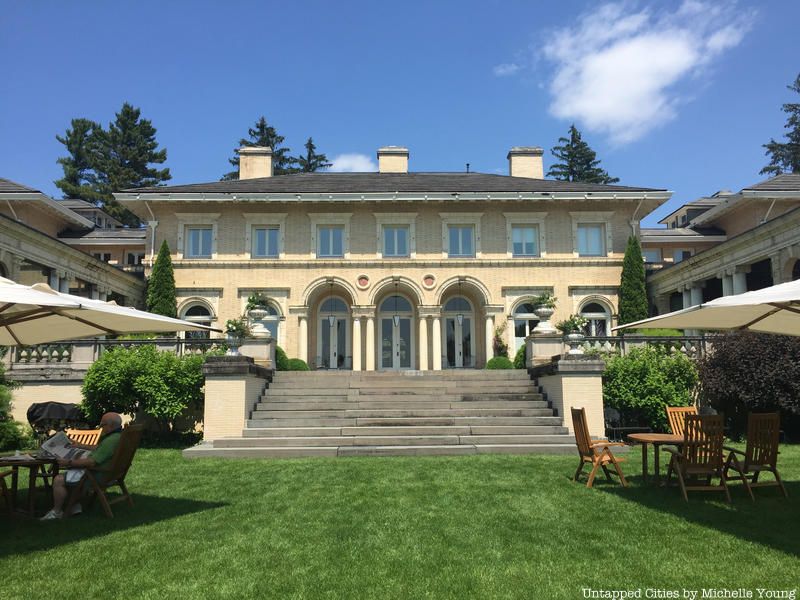
Wheatleigh was built by the New York financier, banker, railroad director, and real estate tycoon Henry H. Cook. The mansion was a gift for his daughter Georgie upon her wedding to a Spanish Count. Built as a “summer cottage”, the estate was based on a 16th century Florentine palazzo and designed by the architectural firm of Peabody and Stearns. No expense was spared in beautifying the opulent mansion; over 150 artisans and many materials were brought over from Italy to adorn the interior and exterior with intricate carvings, while Frederick Law Olmsted–the landscape architect who co-designed Central Park–was assigned the task of creating a “Wheatleigh Park” on the land surrounding the palazzo.
Despite all this, the count and countess only resided in their “summer cottage” for six weeks throughout the year, with their permanent residence being on Fifth Avenue. Most of the 380 acres of the estate was used as a working farm.
The Italianate mansion is currently one of the smallest members of The Leading Hotels of the World and has a fine dining restaurant. Wheatleigh was also listed on the National Register of Historic places in 1982.
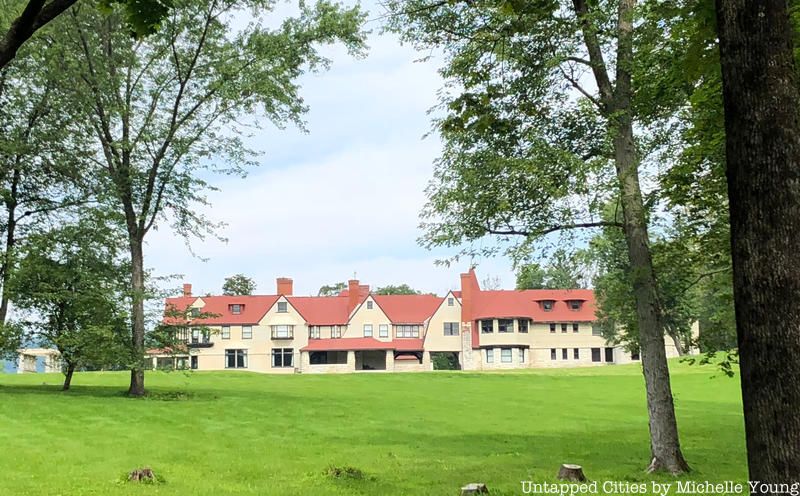
Elm Court was the Berkshire “summer cottage” of Emily Thorn Vanderbilt (granddaughter of Cornelius Vanderbilt “The Commodore”) and William Douglas Sloane. The sprawling, 106-room estate was designed by the renowned architectural firm Peabody and Stearns, while the landscaping was done by the eminent Frederick Law Olmsted.
While the estate was originally constructed with the purpose of being used as a summer home for family and friends, Elm Court’s use evolved into an Inn, and Elm Court Club, Inc. was inaugurated in 1948. However, the estate eventually failed as an inn and the house was locked up in 1957. Over the years the unoccupied mansion was plagued by vandalism, some arson, and looting.
Finally, restoration plans were contrived in 1999 by family descendants to open the estate as a luxury hotel. Throughout the 2000s the estate went on and off the market, with the asking price decreasing, until in July 2012, the entirety of the estate was sold for $9.8 million to a Colorado-based group affiliated with luxury hotel operations. The Berles, rhe previous owners, who are descendants of William Douglas Sloane and Emily Vanderbilt, retain a small percentage of ownership in the property.
Front Yard LLC. however, is currently in a legal battle over plans to open a resort at the 112-room Elm Court estate.
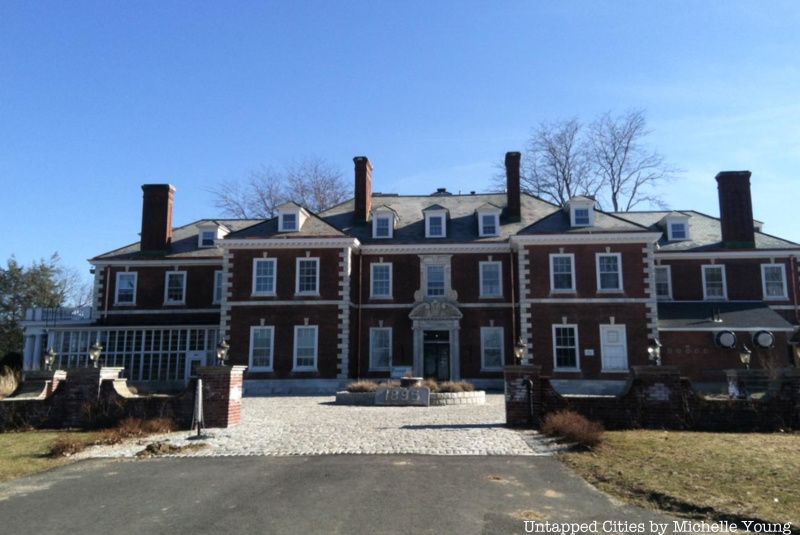
The Eastover estate, owned by New York City stockbroker Harris Fahnestock Jr., was designed by Hoppin & Koen, the same firm that built Edith Wharton’s The Mount, with the gardens by Wharton’s niece, the famed landscape designer Beatrix Farrand. The Georgian-style mansion has 30 rooms and the property also contained a stable, tennis courts, a pool, “a chauffer’s home, an eight-car garage, and a pump house used to store 20,000 gallons of water for use on the property,” according to the history on the Eastover website. Like other Gilded Age mansions in the Berkshires, it was once used as a school, but continues to be privately owned to this day. From 1947 to 2005, it was operated as a resort by the Bisacca family, and sold in 2010. The original 1,500 acre estate is now 450 acres in size, and is used as a resort and holistic retreat.
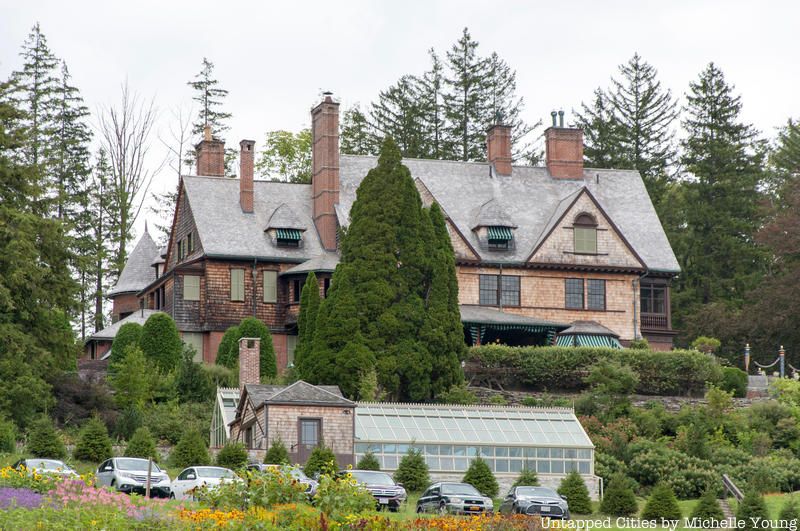
Naumkeag is a quintessential estate from the Gilded Age, an architectural masterpiece by the prominent Mckim, Mead & White firm. The estate was the summer home of lawyer Joseph Hodges Choate, who purchased the land from New York lawyer David Dudley Field in 1884. Interestingly, Field, whom Choate persuaded to sell the 40 acres, had been Choate’s adversary in legal cases concerning Boss Tweed!
The task of designing and constructing the “summer cottage” was given to Choate’s friend McKim, and was completed in 1887 at the cost of $35,000. Interestingly the proposal of Frederick Law Olmsted (the co-designer of Central Park), who was originally tasked with landscaping the estate, was rejected due to his idea to place the house halfway down the hill, in favor of the self-taught designer Nathan Barrett. Implemented between 1884 and 1894, Barrett’s design comprised of a formal flower garden, a broad meadow sloping down the hill, an orchard, and a family cemetery plot at the bottom of the hill, while the main estate house was on top of the hill.
After Choate’s death, minor design changes to the estate were made by his daughter, Mabel. Upon her death in 1958, the estate was bequeathed to the Trustees of Reservations, such that it would be “an authentic representation of the times and manner of living which it now [1958] reflects.”
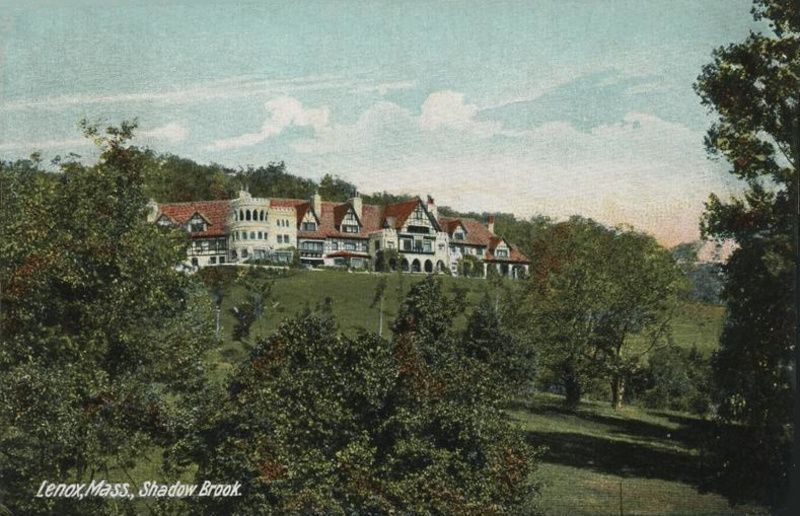
Image via Wikimedia Commons
Shadow Brook can be regarded as one of the more unfortunate of the Gilded Age mansions. The house, which was the largest home in the country for a year (George W. Vanderbilt opened Biltmore in Asheville, North Carolina) was abandoned by its owners just six years after its inauguration, and the building ultimately succumbed to a fire that burnt the estate beyond repair.
The property of Shadow Brook was originally purchased by Samual Gray Ward in 1844, and was where his Oakwood mansion was situated. In 1892 Anson Phelps Stokes bought the estate, along with additional land. The Oakwood building was demolished and Shadow Brook, an L-shaped, English Tudor-style estate was constructed in 1893. Various timber farms were also constructed in the valley below the estate, where Stokes family members continued to live until the 1950’s.
The estate was soon plagued with misfortune, as Stoke crushed his leg in a riding accident that resulted in an amputation. Afterwards, Stoke left his mansion and moved to Connecticut in 1898, stating that he could not enjoy Shadow Brook as much as he had before the accident, since he could no longer ride and play golf.
The mansion was mostly vacant until 1906, when it was sold to Spencer P. Shotter, who left in 1912 after losing his fortune in a federal lawsuit case. The home was sold to Andrew Carnegie in 1917; however he later died at the estate in 1919. Afterwards, the estate was sold to the New England Province of Society of Jesus in 1922, which converted the estate into a Jesuit novitiate.
The estate continued serving the society until on March 10, 1956, shortly after midnight, an oil explosion occurred in the boiler room that ultimately consumed the whole estate, burning it to the ground and taking the lives of three Jesuit priests and a lay brother. While the fire left the 125 residents displaced, plans were already in place for a fireproof residence on the site.
The new Shadow Brook building opened in 1958 and served as a seminary until 1970. Afterwards, the estate was vacant until 1983, when it was sold to a Hindu ashram that established the Kripalu Center for Yoga & Health in the building.
This French chateau-style house was originally built by one of the founders of the Central Pacific Railroad, Mark Hopkins, for her wife, Sherwood Hopkins. The 40-room, seven-story castle was built by the prominent architectural firm Mckim, Mead & White. After Mark Hopkins’s death in 1878, Mary Hopkins married Edward Francis Searles, the interior designer of the castle, who was also thirty years her junior. And so, the castle is named after the interior designer, rather than Mark Hopkins, who commissioned it.
After Hopkin’s death, Searles lived at Searles Castle until his death in 1920. Afterwards, the estate was used as a private girl’s school for thirty years, before changing many hands and usages. Since the mid-1980’s Searles Castle has housed John Dewey Academy, a school for troubled teens.
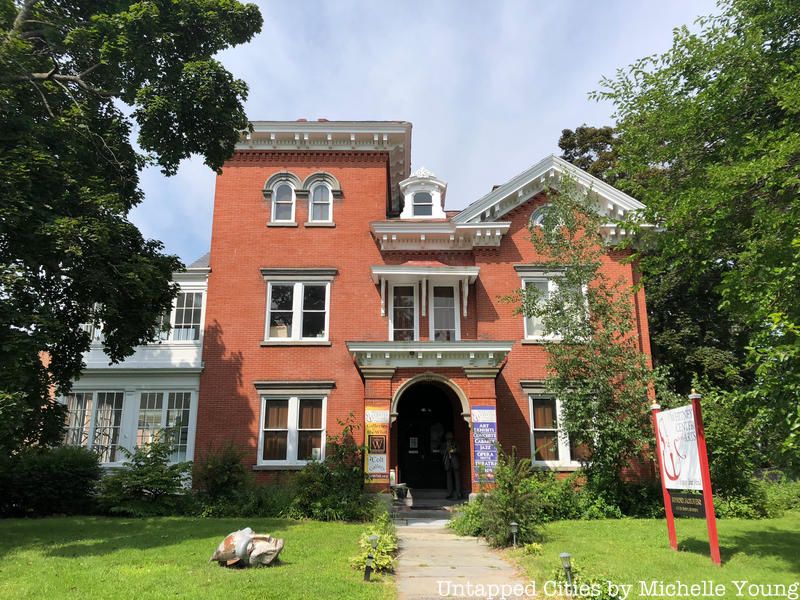
The Thomas Colt House was built in 1865 by the prosperous judge Thomas Colt, after he opened his prosperous mill in Coltsville two years earlier. In the early twentieth century, the building served as a Red Cross headquarters, before being converted into a school for girls, and later bought by Sr. of England Brothers to be used as a woman’s club.
Developer Beth Pearson, member of the Fritz Nominee Trust purchased the estate from the women’s Club of Pittsfield after 70 years. Then in 2012, Lisa Whitney, a New York City-based attorney who had been raised in the area, purchased the building to establish the culture and art center.
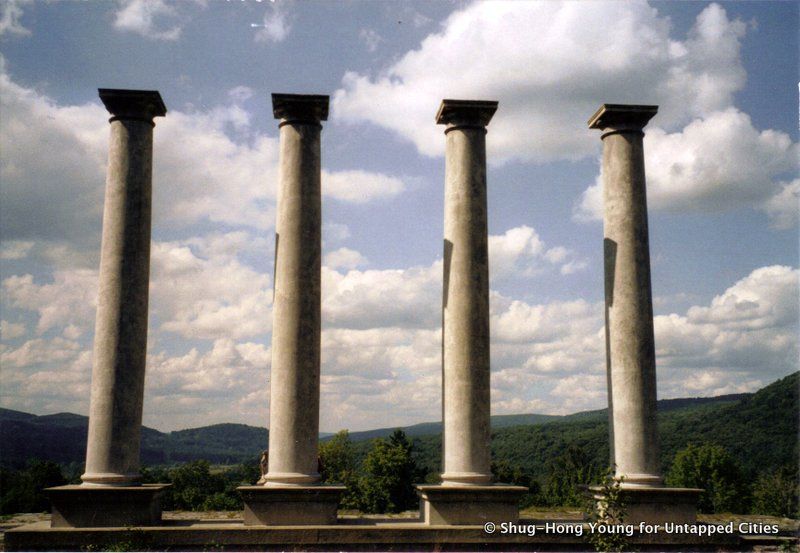
For the abandoned lovers, Ashintully in Tyrinham Valley, about 10 miles from Lenox, was one of the grandest homes, built for Robb de Peyster Tytus and Grace Seeley Henop Tytus. Built at a cost of about $1 million in 1912 (about $24.8 million in 2015 dollars), this Georgian Neoclassical mansion was an economic driver for the area during its construction and afterwards, with its farming and breeding enterprise. The house tragically burned down in 1952 leaving only the four front columns, but most of the property and gardens were donated to the Trustees of Reservations land trust, known as the McLennan Reservation. This property, expanded over several periods, is nearly 600 acres.
A wonderful book that includes photographs and history of the Berkshires’ Gilded Age Mansions, both those still standing and those that have been lost, is Houses of the Berkshires.
Next, check out 10 historic Long Island Gold Coast Mansions you can visit.
Subscribe to our newsletter